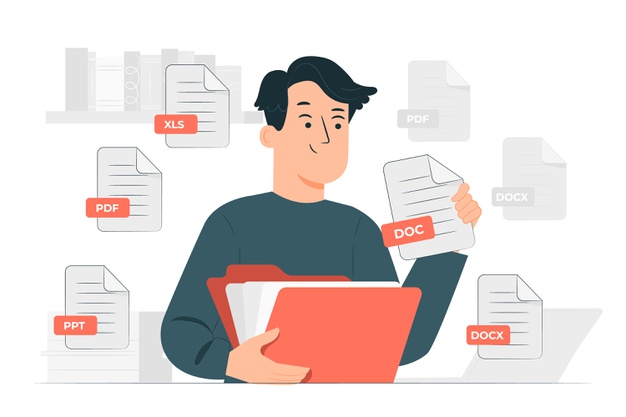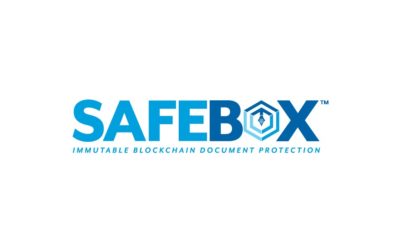Trends in Document Sharing Technology
The world is undergoing a fast-paced change in technology, which is revolutionizing how things around us work. In particular, the 21st century has seen a proliferation in smart devices, with new inventions coming up every day.
One factor that has been subject to change over the years is document sharing technology. This post will highlight trends in these technolgies and how they have affected how we work.
In 1519, Ferdinand Magellan and his crew from Victoria set on an expedition to circumnavigate the globe. You may not believe this, but it took three years for them to complete their mission. Ironically, sending a simple document across the same distance today would take you a split-second, all thanks to technology.
So, what exactly are these risks? Well, they come in the form of security issues due to poor document-sharing techniques. This post will analyze some workplace habits and specific technologies that are likely to cause the mentioned hazards.
How it all began
The spread of smart devices in the corporate sector is perhaps to explain why document sharing-technologies have changed so much. From emails to the cloud, all these platforms have their merits and demerits, but we’ll get to that. First, let’s look at the man we have to thank for all these ideas, Edwin G. Siebels, inventor of the vertical filing system way back in 1898. Since then, different technologies have come up, been embraced by the corporate world, and finally been eroded by time and corporate strategies.
After Siebel’s invention, fast-forward to the early 60s, pigeonhole cabinets were quite popular since they were convenient to use. Secretaries placed important documents in envelopes, which were then kept in small cubicles.
The 70s came with filing systems, which were rapidly gaining popularity in offices, schools, and hospitals. However, their biggest downside was document-organization, where they were often left to pile up on desks. Consequently, file loss was quite common at the time.
Contrary to the norm today, file sharing involved physically exchanging documents with the concerned parties. This exposed corporations to security risks since there was no method of ensuring the integrity of sensitive documents.
The Computerized Bulletin Board System is Invented
Modern File sharing technology can be traced back to one gentleman in the late 70s, Ward Christensen. A member of the Chicago Area Computer Hobbyists Exchange (CACHE), he created software that enabled users to send binary files through a modem connected by a single phone number. It was only a matter of time since Christensen’s invention and numerous innovations and patents started being filed.


Document-Sharing Today
Today sharing a file is one of the easiest things there is. The techniques at your disposal are numerous, and each has its own merits and demerits, from emailing, to solid-state devices, to the cloud, the list goes on.
Current Trends in Document Sharing Technology
More than ever before, companies all around the world have realized the importance of document-sharing technology. One might argue that these files contain the lifeline of the corporation, and as such they must be handled with much care and sufficient investment be made towards safeguarding and organizing documents.
Firms are slowly migrating from paper documents to digital files, a feat that is facilitated by the fast rise in technology. Competition is another factor prompting companies to embrace the new trend. Why so? Well, all the big players are moving to digital platforms, why would the competitors be left behind?
Document sharing and handling software are common today, but they are nothing compared to the platforms used by companies fifty of seventy years ago. Businesses are now opting for web-based deployment, workflows and cloud storage techniques for document sharing. This has presented a paradigm shift in both customer and employee experience in fields such as Law, Medicine, Education, and marketing.
It’s no lie that document sharing and management software are here to stay. While some have been on the limelight for quite some now, others are just coming onto the scene. With this in mind, lets look at some of the latest trends in document sharing technology today.
The Cloud
The term ‘cloud’ did not officially become a thing up to the mid 90s and was facilitated by the introduction of personal computers at the time. It generally referred to the process of getting software services over the internet.
However, when it was first introduced, the technology was met with much critism from clients and investors alike. Nobody really knew what it was, and lets be honest, it’s human nature to be hostile towards things we do not understand.
As time went by, people started realizing the benefits of cloud technology. Suddenly, all were flocking the platform in search of entertainment, storage, and many other services.
Today, it is a well-known factor that the cloud is one of the greatest inventions ever to have graced the IT field. Companies are now taking advantage of the platform due to the numerous benefits it poses.
So, why exactly is cloud technology such a big success? The answer to this question can be inferred from the definition of the term itself. Simply put, it is the delivery of on demand services typically over the internet on a pay as you go basis.
Cloud technology and document sharing and management go hand in hand. With the platform, companies no longer have to worry about using much space to store files, as this can easily be done over the cloud.
For companies that have already migrated to paperless documents, cloud technology an additional advantage. The files are normally stored on company servers, which are quite expensive to maintain. With the cloud, companies no longer have to use their own servers as files are hosted on off-site cloud servers.
From the information above, its palpable that cloud technology is the new trend. Corporations are quickly migrating to the platform. It is only a matter of time before it becomes the new norm since conpetiition is likely to propel all major firms into the cloud.
In fact, Forbes estimated that approximately 83 percent of companies would have migrated onto the cloud by end of 2020. Sure enough, 2020 did witness a spike in the number of companies that relied on the platform.
Its all about Mobility, from smartphones, to laptops, to tablets, and so on
On average, how many daily hours do you spend on your phone? I am willing to bet its more than you let yourself believe.
Mobile devices have taken the world by storm, infliltrating every aspect of life, both in the business and personal realms. The document sharing sector has not been left behind. Given the fact that 77 percent of Americans own mobile phones, it is obvious that professionals are well respresented in this figure.
The modern professional is a person that likes moving up and about, and since documents will be required at different instances and locations, it goes without saying that these indviduals need mobile devices.
Document sharing software on mobile devices is designed to make the experience user friendly enabling users to quicky access, share, and make changes to important files anywhere.
Companies understand the importance of having documents at hand whenever and wherever they are needed. Therefore, top IT firms are investing in marketing websites specifically dedeicated to document sharing on mobile devices.
From the information presented above, document sharing software compatible with mobile devices is likely to continue being profitable in the future. This can be attributed to the fact that professionals around the globe are adopting to the mobile lifestyle.
Collaboration is the way to go
In the past, many employees preferred to work alone. This strategy was perfect in some instances, and at the same time a plain mistake in most cases.
With the advent of digital document sharing platforms, employees have the chance to work together on collaborative documents. Why so? It is a well known fact that working together tends to boost output quality. Two heads are better than one, right?
Document sharing and management software now makes it easy to achieve collaborative effort in documents. Specific features include ability to track changes and workflow automation, which allows documents to be assigned and monitored. This way, teams get to save time that would have otherwise been used to find documents and assign them to relevant individuals.
The future is bright for document collaboration since employees will always need files when assigned tasks. Regardless of being remote or onsite, collaborative document sharing software is a must have package for current and future workers.
Document Sharing Software are becoming affordable
As the days go by, more and more document sharing software continue flooding the market. Companies are forced to lower prices while maintaining efficiency to get a piece of the market share.
Not long ago, document-sharing software was too expensive even for reputable companies. However, with time, it became evident that these platforms would have to be affordable for them to be adopted universally.
From here on, these platforms will continue getting cheaper, to the point where you can have all your document sharing needs met without having to dig deep into your pocket. This does not imply that the quality and efficiency of the platforms will be compromised. On the contrary, they will only get more user friendly and efficient.
Scalability
Every business grows from a small size with a few employees to become a large corporation. Many of these companies face challenges during growth as they are forced to seek new document sharing software to accommodate the growing number of clients and employees.
Today, IT firms have taken the problem mentioned above into account and created software that grows according to the business needs. That way , companies get to have a smooth transition when scaling up operations.
The Future
Document sharing is a never ending cycle of metarmophosis and the information above just proves it. Companies today opt for cutting edge document sharing software in place of outdated packages.
Platforms such as the cloud will play a major role in shaping how document sharing technology continues to evolve in the future. Despite the uncertainities of any more technologies that may come in the future, one factor is certain; that it only gets better from here.
Are you stuck with an outdated document sharing software? Consider switching to SAFEBOXTM, a cloud-based platform designed to offer proper security and immutability to documents. It will fulfill your document sharing needs and comes with one password for all your files. What’s more, the subscription plans are pocket-friendly. Overall, platforms such as SAFEBOXTM are making document sharing a whole lot easier and convenient for employees all around the world.
Trending Technologies 2020
Notary Public: 5 Tips to Increase Productivity
A notary public's job is a complex one. The work involves witnessing and taking care of relevant documents. As there is much paperwork required in this job, taking care of everything can be a little overwhelming. This is where blockchain comes into the picture....
Why do you need MetaMask?
MetaMask is a cryptocurrency wallet that allows you to interact with the Ethereum enabled distributed applications(Dapps) without having the need to run the Ethereum node. It is available as a browser extension that allows smooth interaction between the web...
SAFEBOX Pricing
SAFEBOX makes use of cloud storage and blockchain technology to facilitate the work related to records. Our platform takes care of signing agents, attorneys, medical professionals, title companies, automobile dealers, escrow companies, and many more who need to store...
5 Ways Blockchain technology is transforming the signing agent’s work
The blockchain's primary features have proved to be a great asset in improving the signing agent capabilities. With the help of blockchain technology, a signing agent can do most of the work remotely. Blockchain technology has transformed the signing agent's work in...
List of services for which a Notary Public can charge fees?
There are different kinds of policies and regulations for every state regarding the fees of the notaries and services a Notary Public can charge. Some of the common services that notaries can charge for are as follows: Copies Notaries, for fixed fees, can also certify...
Our Latest Updates

How Can Blockchain Technology Improve Data Storage?
Decentralized Cloud Storage Cloud storage systems maintain data on remote servers that are accessible from the internet. However, unlike conventional cloud servers, decentralized cloud storage does not keep user data on a single centralized server. A decentralized...
What are the two main ways to store a document on the blockchain
Cryptocurrencies such as Bitcoin have shown the use of blockchain technology for different forms of money and currency. Although they store transactions within blocks, we can no doubt extend this data beyond financial data. In theory, we can store any form of data on...
Notary Public: 5 Tips to Increase Productivity
A notary public's job is a complex one. The work involves witnessing and taking care of relevant documents. As there is much paperwork required in this job, taking care of everything can be a little overwhelming. This is where blockchain comes into the picture....







